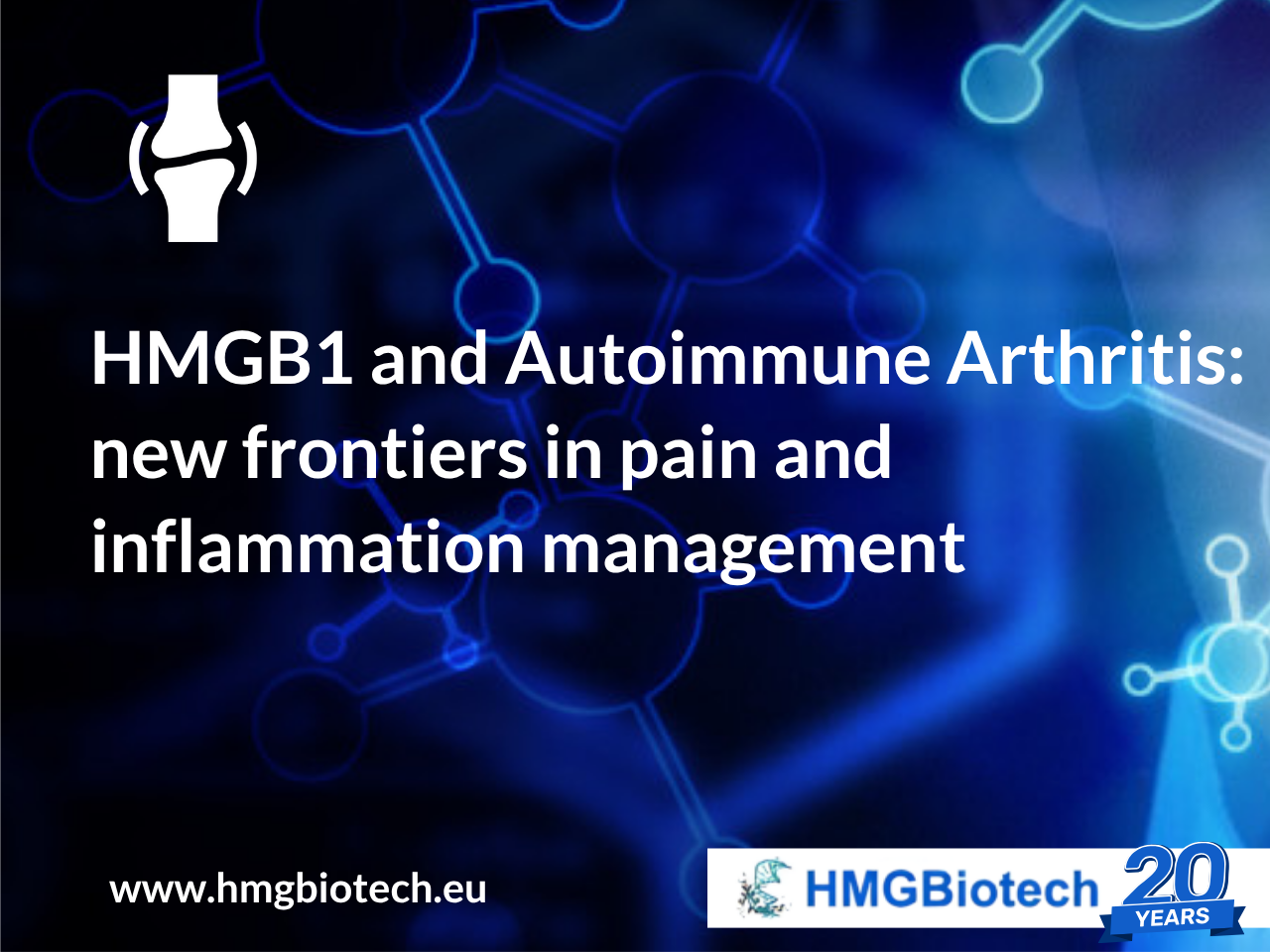As we mark World Autoimmune Arthritis Day, occurring on 20th May, it is critical to highlight the molecular underpinnings that drive chronic pain and inflammation in autoimmune joint diseases such as rheumatoid arthritis (RA). Among these, High Mobility Group Box 1 (HMGB1) has emerged as an important mediator, shaping the trajectory of inflammation and nociception.
Pain beyond inflammation
In RA, pain often persists even when inflammation subsides. HMGB1, a nuclear DNA-binding protein, becomes a potent extracellular danger signal when released during cell stress or damage. Once outside the cell, HMGB1 binds to pattern recognition receptors such as TLR4 and RAGE, activating signaling pathways like MAPK and NF-κB.
This not only fuels synovial inflammation and cytokine production but also sensitizes pain pathways both peripherally and centrally. As highlighted in a recent review, targeting HMGB1 offers a novel approach to mitigate chronic pain in RA by disrupting these nociceptive and inflammatory circuits.
Regulation through proteolytic cleavage
Complementing our understanding of HMGB1’s pathogenic potential, new insights show that proteolytic enzymes in arthritic joints, such as neutrophil elastase, cathepsin G, and matrix metalloproteinase 3, can cleave HMGB1 into fragments with altered receptor affinity or complete inactivation. This processing provides a layer of regulatory control within inflamed tissues, potentially modulating the intensity and duration of HMGB1-driven inflammation.
These studies underscore HMGB1’s dual role as a mediator of chronic pain and inflammation and a regulated target within the inflammatory microenvironment. Therapeutic strategies aimed at blocking HMGB1 signaling or modulating its enzymatic degradation could provide relief not only from joint inflammation but also from the lingering pain that severely impacts quality of life.
Contact us for your pre-sales questions about HMGB1
Read the full articles about the studies:
https://www.frontiersin.org/journals/immunology/articles/10.3389/fimmu.2020.448262/full
https://www.sciencedirect.com/science/article/abs/pii/S0024320524009512



